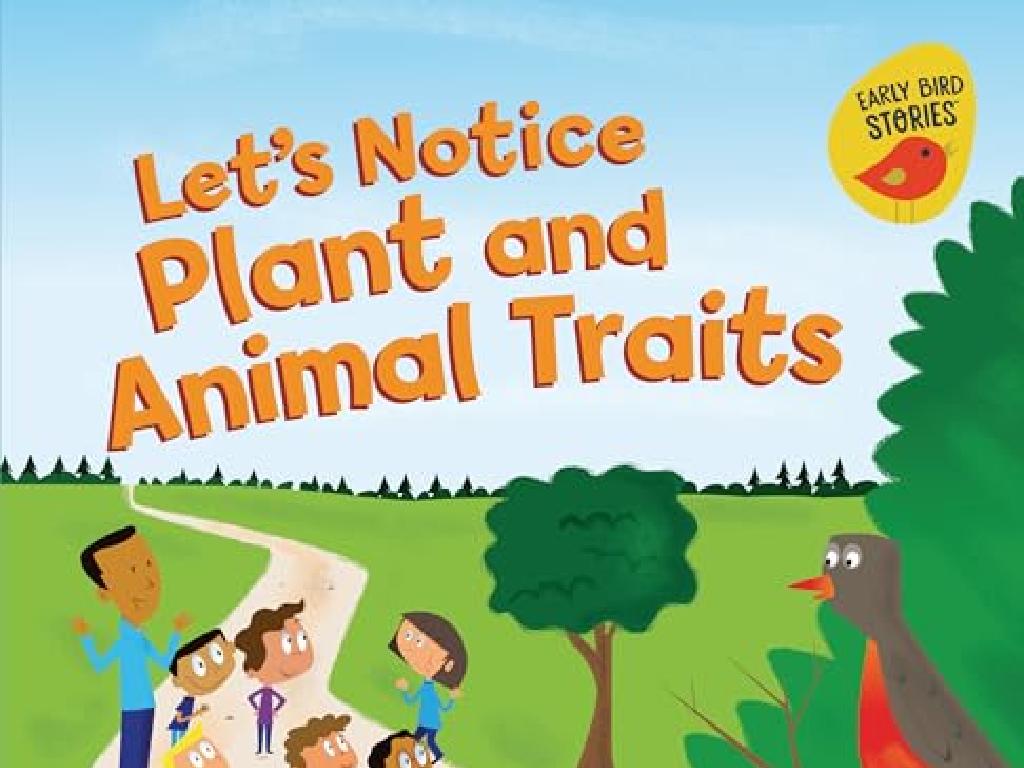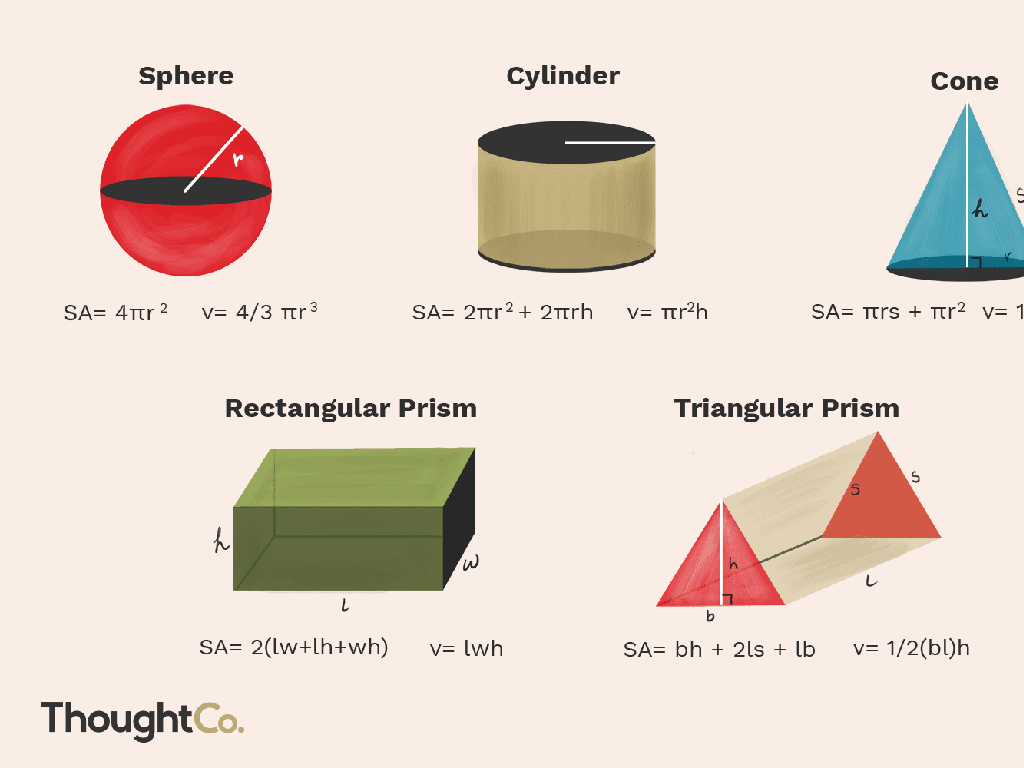Identify Plurals, Singular Possessives, And Plural Possessives
Subject: Language arts
Grade: Fifth grade
Topic: Nouns
Please LOG IN to download the presentation. Access is available to registered users only.
View More Content
Today’s Adventure: Plurals and Possessives!
– Singular vs. Plural Nouns
– Singular: one item (cat). Plural: more than one (cats).
– Singular Possessive Nouns
– Shows ownership by one (cat’s toy).
– Plural Possessive Nouns
– Shows ownership by more than one (cats’ toys).
– Importance of Knowing Differences
– Helps in clear communication and writing correctly.
|
This slide introduces the concept of singular and plural nouns, as well as possessive forms. Understanding the difference between these types of nouns is crucial for students as it aids in proper sentence structure and clarity in writing. Singular nouns refer to one item, while plural nouns refer to more than one. When a noun is possessive, it shows ownership. Singular possessive nouns use an apostrophe before the ‘s’ to show that one person or thing owns something, while plural possessive nouns place the apostrophe after the ‘s’ to indicate that more than one person or thing owns something. Emphasize the importance of these concepts in everyday communication, and provide examples to illustrate each point. Encourage students to come up with their own examples and to practice identifying and using these nouns correctly.
Exploring Nouns: The Building Blocks of Language
– Define a noun
– A noun is a word for a person, place, thing, or idea
– Nouns represent many things
– They can be objects, people, concepts, etc.
– Examples: ‘dog’, ‘school’, ‘happiness’
– ‘dog’ refers to an animal, ‘school’ to a place of learning, ‘happiness’ to a feeling
|
Begin the lesson with a quick review of what a noun is, ensuring that students recall that nouns are the names of people, places, things, or ideas. Provide clear examples to illustrate each type of noun. For instance, ‘dog’ is a common noun for an animal, ‘school’ is a place where education occurs, and ‘happiness’ is an abstract idea representing a state of being content or joyful. Encourage students to think of their own examples and share them with the class to reinforce their understanding. This foundational knowledge will be crucial as they learn to identify different forms of nouns, such as plurals and possessives.
Singular and Plural Nouns
– Singular Nouns: One item
– Example: ‘cat’ means one cat
– Plural Nouns: More than one
– Example: ‘cats’ means two or more cats
– Rules for making plurals
– Add ‘s’ or ‘es’, change ‘y’ to ‘ies’
– Class activity: Pluralize nouns!
|
This slide introduces the concept of singular and plural nouns to the students. Start by explaining that singular nouns refer to one single item, while plural nouns refer to more than one item. Provide examples for each and then discuss the basic rules for turning singular nouns into plural nouns, such as adding ‘s’ or ‘es’, or changing ‘y’ to ‘ies’ for words ending in ‘y’. For the class activity, have students practice by writing down the plural forms of various singular nouns you provide. This will help reinforce their understanding of the concept. Possible activities include a worksheet with singular nouns to pluralize, a game where students turn singular nouns into plurals in teams, or a creative writing assignment where they use a mix of singular and plural nouns.
Making Nouns Plural
– Add ‘s’ to most nouns
– Example: ‘dog’ becomes ‘dogs’
– Add ‘es’ for ‘ch’, ‘sh’, ‘x’, ‘s’
– Example: ‘bus’ becomes ‘buses’
– Change ‘y’ to ‘ies’
– Example: ‘puppy’ becomes ‘puppies’
– Learn irregular noun changes
– Example: ‘child’ becomes ‘children’
|
This slide is focused on teaching students the rules for making nouns plural. Start by explaining that most nouns simply require an ‘s’ at the end to become plural. Then, discuss the special cases where ‘es’ is added, particularly after certain endings like ‘ch’, ‘sh’, ‘x’, and ‘s’. Next, address the change from ‘y’ to ‘ies’ for nouns ending in ‘y’. Finally, introduce irregular nouns that do not follow the standard rules and change form completely. Provide additional examples for each rule and encourage students to come up with their own examples. This will help them understand and remember the different ways to make nouns plural.
Singular Possessive Nouns
– Show ownership by one
– When one person or thing owns something
– Add apostrophe + ‘s’
– Like in ‘the cat’s toy’, ‘Sarah’s book’
– Practice with examples
– ‘The teacher’s desk’, ‘Mom’s car’
– Understand its use
|
This slide introduces the concept of singular possessive nouns, which indicate ownership by one person or thing. Emphasize the use of an apostrophe followed by the letter ‘s’ to form the possessive. Provide clear examples to illustrate this point, such as ‘the cat’s toy’ to show that the toy belongs to the cat, or ‘Sarah’s book’ to indicate that the book belongs to Sarah. Encourage students to come up with their own examples and write sentences using singular possessive nouns. This will help them understand how to correctly use apostrophes to show possession in their writing.
Mastering Plural Possessive Nouns
– Plural possessives show group ownership
– Add apostrophe after ‘s’ for regular plurals
– Like ‘puppies’ becomes ‘puppies’ toys’
– For irregular plurals, add apostrophe + ‘s’
– ‘Children’ becomes ‘children’s games’
– Practice with class examples
– We’ll do exercises as a class to learn
|
This slide introduces the concept of plural possessive nouns, which indicate that something belongs to more than one person or thing. Start by explaining the concept of ownership and how it is shown in writing. For most nouns that are made plural by adding ‘s’, simply add an apostrophe after the ‘s’ to make them possessive. For nouns that are plural without using ‘s’, like ‘children’ or ‘men’, add an apostrophe followed by ‘s’ to create the possessive form. Engage the class with interactive examples, writing sentences on the board and having students convert the nouns to their plural possessive forms. Encourage students to think of their own examples and share them with the class.
Let’s Practice: Nouns and Their Forms
– Identify noun forms in sentences
– Is the noun by itself, or does it show ownership?
– Convert nouns to match sentences
– Change the noun to fit the sentence’s meaning
– Singular vs. plural recognition
– Does the noun refer to one thing or many?
– Possessive forms application
– Use apostrophes for possessives correctly
|
This slide is designed for a class activity where students will practice identifying and converting nouns into their correct forms. The activity will help students distinguish between singular and plural nouns, as well as singular possessive and plural possessive nouns. For example, they will learn that adding ‘s’ typically makes a noun plural (dog to dogs), while adding an apostrophe and ‘s’ can indicate possession (dog’s toy). For plural possessive nouns, students will practice adding an apostrophe after the ‘s’ (dogs’ owner). The teacher should prepare sentences with different noun forms and guide students through the process of identifying and converting them. Possible activities include peer review of sentence conversions, creating a classroom chart of noun forms, and a worksheet where students fill in the correct noun form.
Class Activity: Possessive Noun Hunt
– Find items belonging to someone in class
– Write singular and plural possessive forms
– Example: If it’s a pencil of John, write ‘John’s pencil’ (singular possessive)
– Share with the class your findings
– Explain the possessive forms used
– Discuss why ‘John’s’ is singular possessive and ‘students books’ is plural possessive
|
This activity is designed to help students understand and apply the concept of singular and plural possessives in a practical context. Have the students look around the classroom for items that belong to their classmates or to the class as a group. They should write down the possessive form of the noun that owns the item, distinguishing between singular and plural possessives. For example, ‘the teacher’s desk’ shows singular possession, whereas ‘the teachers’ lounge’ shows plural possession. After writing down examples, students will share their findings with the class and explain the grammatical reasoning behind their choices. This will reinforce their understanding of how possessives are formed and used in sentences. Provide guidance and feedback as necessary during the sharing portion of the activity.
Wrapping Up: Plurals & Possessives
– Congratulations on learning plurals & possessives!
– Keep practicing: it leads to perfection
– Homework: Craft 10 mixed-form sentences
– Use singular, plural, singular possessive, and plural possessive nouns
– Review and prepare to share your sentences
– Be ready to discuss how you used each form
|
Great work today, students! Understanding the difference between plurals, singular possessives, and plural possessives is crucial for mastering the English language. Remember that regular practice is key to becoming comfortable with these forms. For homework, students are expected to write 10 sentences that incorporate the different noun forms we’ve discussed. This will help reinforce their learning and prepare them for the next class, where they will share and review their sentences with peers. Encourage creativity and the use of a variety of nouns to make the exercise more engaging.






